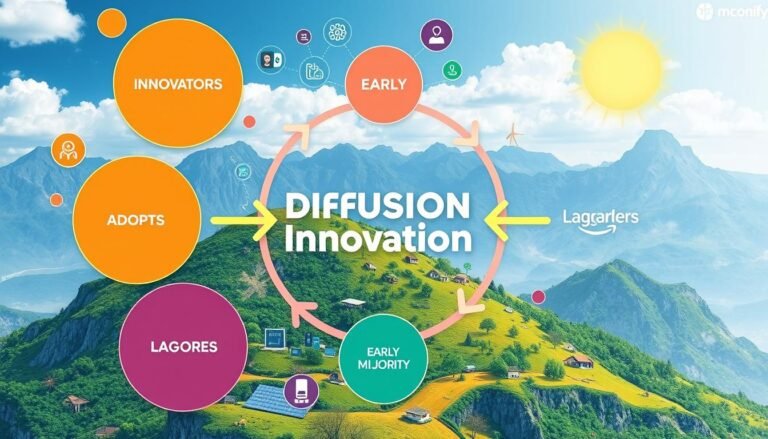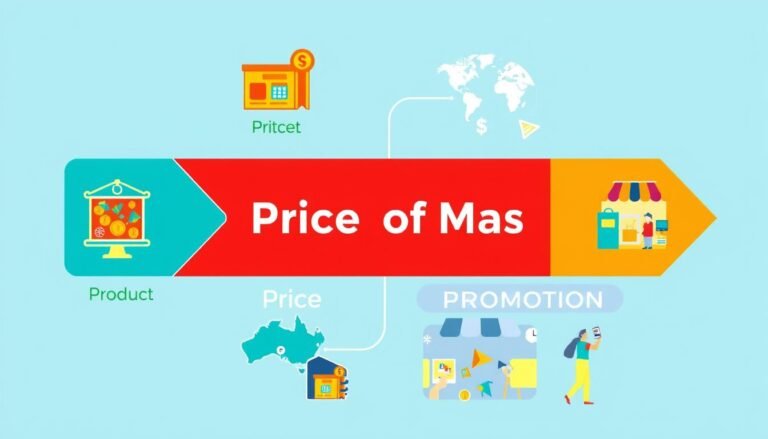Exploring the Delphi Method: Expert Consensus
Have you ever thought about how experts in different fields can agree on tough issues when there’s little hard data? The Delphi Method is a structured way to gather expert opinions through a step-by-step process. It helps build a consensus among experts. With about 20,000 articles talking about it, especially in healthcare, the Delphi Method has changed how decisions are made in many areas. This piece will explore its beginnings, key features, and uses, showing how it leads to informed, team-based decisions.
Key Takeaways
- The Delphi Method allows experts to come together and share opinions without being swayed by personal biases.
- There’s a big increase in articles about the Delphi Method, especially in the last ten years, showing its growing importance.
- About two-thirds of Delphi studies are in medical journals, showing its big role in healthcare.
- Tools like ExpertLens help keep opinions anonymous while bringing together a wide range of people.
- Getting a response rate of around 70% makes Delphi studies more credible.
Introduction to the Delphi Method
The Delphi Technique started in the early 1960s. It’s a way to gather expert opinions in a structured way. Experts share their insights on topics with little data. The process involves several rounds of questions to improve opinions and quality of knowledge.
This method is used in healthcare, technology, and policy making. For example, the German Ministry of Research and Technology used it in 1993 for a report on science and technology. It shows how the Delphi Technique can build a strong consensus among experts over time.
Recently, the Delphi Method has been used in more areas. A study in Food Policy looked at success factors in private food marketing. The Technological Forecasting and Social Change journal also explored how people feel about the Delphi method. This shows its flexibility in different research settings.
Researchers are now exploring the Delphi Technique in many fields. A 2017 study in the College of Business Administration looked at election futures markets. The Delphi Method has proven effective in reaching consensus through feedback. It has enriched knowledge in areas like nursing and healthcare.
The Origins of the Delphi Method
The Delphi Method started in the 1950s and 1960s at the RAND Corporation. It was called “Project Delphi.” This method aimed to predict new technologies by using experts’ opinions without revealing their identities. Olaf Helmer, Norman Dalkey, and Nicholas Rescher were key in creating this method. They wanted to improve decision-making during the Cold War and a time of big tech changes.
Today, the Delphi Method is used in many areas like healthcare, the military, and social sciences. It’s known for helping experts come to a common agreement. This makes it stand out from other forecasting methods, like prediction markets, because it uses a structured approach and group wisdom.
Recently, new versions of the Delphi Method have been developed, like real-time Delphi. These have been studied by experts from different fields. One example shows how well it works: predicting product sales with an accuracy of 3-4%. This beats traditional methods and shows the power of expert opinions in making big decisions.
The Delphi Method is also key in making policies in developing countries. It brings together expert opinions to help different groups work together. This method has led to new ways of making public policy, focusing on what’s wanted and what’s possible.
Throughout its history, the Delphi Method has shown its value in today’s world. It adapts to new challenges and makes sure expert opinions are heard in important decisions.
Key Features of the Delphi Method
The Delphi Method is known for its unique features that help experts agree across different fields. It has key parts that make it work well. These include processes that keep feedback anonymous and structured. Each part is crucial for making decisions with expert advice.
Anonymity and Controlled Feedback
Anonymity is key in the Delphi Method. It lets experts share their thoughts without fear of being swayed by others. This helps avoid the influence of strong personalities in a group.
After sharing their views, experts get feedback. This feedback shows the main points from the previous round. It helps experts update their ideas based on what others think, leading to deeper discussions.
Iterative Consensus-Building Approach
The Delphi Method focuses on building consensus step by step. It uses several rounds of questionnaires to collect and review expert opinions. This process lets experts change their views based on what others say.
Statistical analysis checks the method’s accuracy. It makes sure the final agreement is well-supported. With controlled feedback and ongoing discussion, the Delphi Method is a strong way to get experts to agree.
Applications of the Delphi Method in Various Domains
The Delphi Method is a key tool for getting expert opinions in many areas, like healthcare and policy making. It helps find common ground on tough issues, which is key for making smart choices. This part looks at how it’s used in healthcare and policy making, showing its big impact.
Healthcare and Policy Development
In healthcare, the Delphi Method is very important. It helps make clinical guidelines, especially in areas like end-of-life care and public health. Experts use it to make sure best practices are followed, which helps patients get better care.
Also, Delphi studies help look at health policies, finding and setting priorities. This is crucial for making healthcare plans that meet today’s and tomorrow’s needs.
Utilization in Research Priorities
The Delphi Method also helps set and check research priorities in different areas. By using expert panels, groups can spot key areas that need more study. This method helps build agreement in social sciences, tackling big social issues.
Delphi studies help policymakers see what research to focus on and its possible effects. This makes sure resources are used well and for the best results.
| Domain | Applications | Benefits |
|---|---|---|
| Healthcare | Clinical guidelines, best practices development | Improved patient outcomes, informed decision-making |
| Policy Development | Identifying research priorities, assessing policy impacts | Strategic resource allocation, effective strategies |
| Social Sciences | Resolving societal challenges, expert consensus on issues | Integrated knowledge, innovative discussion processes |
Understanding Expert Opinion Elicitation
Expert opinion elicitation is key to getting insights from those who know a lot in a certain area. It’s about creating a space where experts share their views and come to a common agreement. This process helps researchers set a standard for what everyone agrees on, making sure the results truly show what the group thinks.
Defining Expert Consensus
Setting a clear agreement threshold is part of defining expert consensus. Usually, this is set at 70% or higher. This step is vital for expert opinion gathering as it keeps things clear and focused. By defining consensus, organizers can lead discussions towards a clear and credible outcome.
Criteria for Expert Selection
The success of expert opinion gathering relies on how experts are chosen. Using the right expert selection criteria ensures that chosen experts have the right knowledge and skills. Important factors to think about include:
- Subject Matter Expertise: People should have deep experience and knowledge in their areas.
- Competency: Experts need to show they can successfully work in research or professional settings.
- Diversity: Having experts from different areas adds variety to discussions and enriches the consensus.
- Availability: Experts should be able to take part fully in the process.
Challenges in Implementing the Delphi Method
The Delphi Method has many benefits, but it also faces some challenges. One big issue is participant fatigue from many questionnaires. This can make people less engaged, which might lower the quality of their answers.
Defining consensus is tricky. Experts might understand response categories differently, causing confusion during analysis. This subjectivity can make the results less reliable.
Keeping participants anonymous is key but hard. It’s important for honest feedback, yet it might stop deep discussions. This can make building consensus harder.
To overcome these issues, planning and following best practices is crucial. Clear rules and a structured method can help. Here’s a table with the main challenges and how to deal with them:
| Challenge | Implication | Suggested Strategy |
|---|---|---|
| Participant Fatigue | Reduced engagement and potential dropouts | Limit the number of rounds and redistribute questionnaires more efficiently |
| Difficulty Defining Consensus | Varying interpretations of responses | Use clear definitions and examples in the initial rounds |
| Maintaining Anonymity | Stifled dialogue and engagement | Encourage group discussions in rounds while preserving anonymity |
Best Practices for Conducting a Delphi Study
When you research using the Delphi method, following best practices is key. Start by clearly defining your research question. This makes sure everyone knows what you’re looking for and helps them give better answers.
For a good Delphi study, you need at least 30 experts. This number gives you enough data for analysis. Having more experts doesn’t always make the results better.
It’s important to get over 70% of your experts to respond each time. This keeps your results trustworthy and ensures everyone’s voice is heard.
Decide on a level of disagreement, like an SD of 1.0, to know when you have a consensus. The goal can vary, but it’s usually between 51% and 80% agreement. To get more people to participate, you can send reminders or offer rewards.
When making your Delphi questionnaires, you can use your own data or look at what others have found. You can send them out on paper or online. This way, you can reach more people and use the method that works best for you.
Picking the right experts is crucial. They need to know a lot about the topic to give good answers. These can be professionals or people from certain fields who bring different views to the table.
| Best Practices | Description |
|---|---|
| Define Research Question | Ensure a focused agenda for expert contributions. |
| Panel Size | Ideal size of at least 30 members for statistical rigor. |
| Response Rate | Aim for over 70% to maintain study validity. |
| Standard Deviation | Acceptable level of agreement is an SD of 1.0. |
| Consensus Levels | Range from 51% to 80% depending on study goals. |
| Questionnaire Design | Develop from primary data or literature; use varied admin methods. |
| Expert Selection | Crucial for validity; seek knowledgeable representatives. |
Conclusion
The Delphi Method is a key tool for getting expert opinions in situations where data is hard to find. It uses anonymous feedback from experts to build a strong consensus. This method is widely used in many fields to improve decision-making.
Knowing how the Delphi Method works is vital for those who want to use it. It has evolved over time, with new versions like the Real-time Delphi method. This version lets experts answer questions online within a certain time frame. Using a panel of experts, like in this study with emergency nurses, makes the results more reliable.
The need for smart decision-making is growing, making the Delphi Method more important. With over 20 different versions, it shows how flexible and useful it is. Using the Delphi Method helps in making better decisions and builds our shared knowledge in a complex world.
Source Links
- Generating Evidence Using the Delphi Method
- The Delphi method | BPS
- The Delphi Method: An Introduction
- Use of Delphi in health sciences research: A narrative review
- What are Delphi studies?
- Delphi method
- Delphi methodology in healthcare research: How to decide its appropriateness
- The Delphi technique explained
- What Is the Delphi Method, and How Is It Useful in Forecasting?
- Delphi Method: Definition, Steps, Pros, Cons, Uses & Examples
- Delphi Method
- Frontiers | Delphi Technique in Health Sciences: A Map
- Application of the Delphi method to the development of common data elements for social drivers of health: A systematic scoping review – PubMed
- Expert Opinions in Forecasting: The Role of the Delphi Technique
- Reviewing the evidence: expert selection, level of elicitation, fitting and pooling – Developing a reference protocol for structured expert elicitation in health-care decision-making: a mixed-methods study
- Good practice in structured expert elicitation: learning from the available guidance – Developing a reference protocol for structured expert elicitation in health-care decision-making: a mixed-methods study
- The Advantages and Disadvantages of the Delphi Method | Delphi Consensus | Triducive
- Improving design choices in Delphi studies in medicine: the case of an exemplary physician multi-round panel study with 100% response – BMC Medical Research Methodology
- Applying real-time Delphi methods: development of a pain management survey in emergency nursing – BMC Nursing
- A Comparative Analysis of Delphi Method and Horizon Scanning * Journal of Futures Studies







